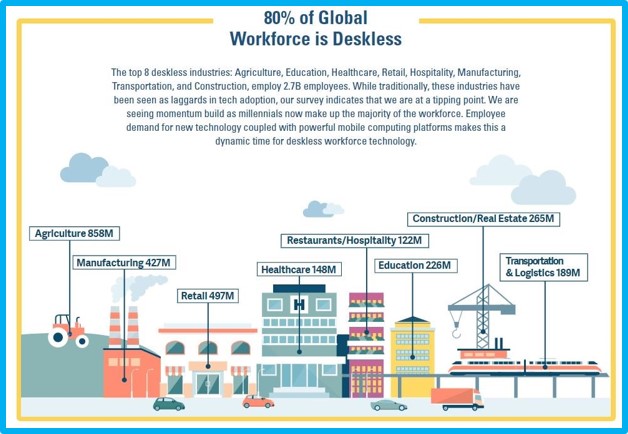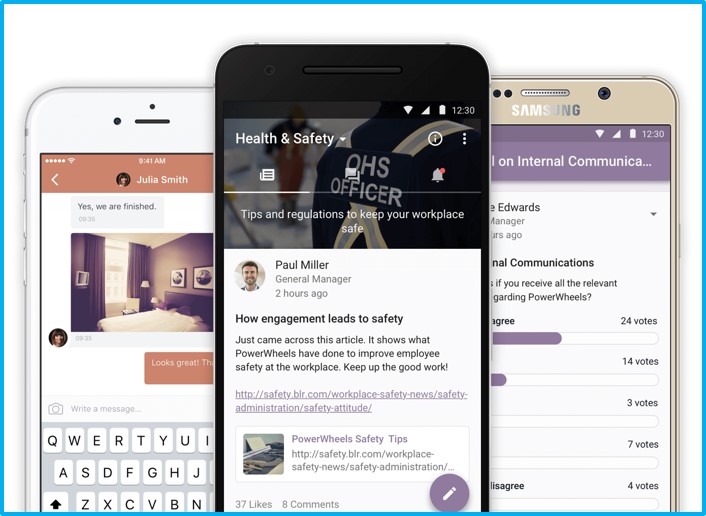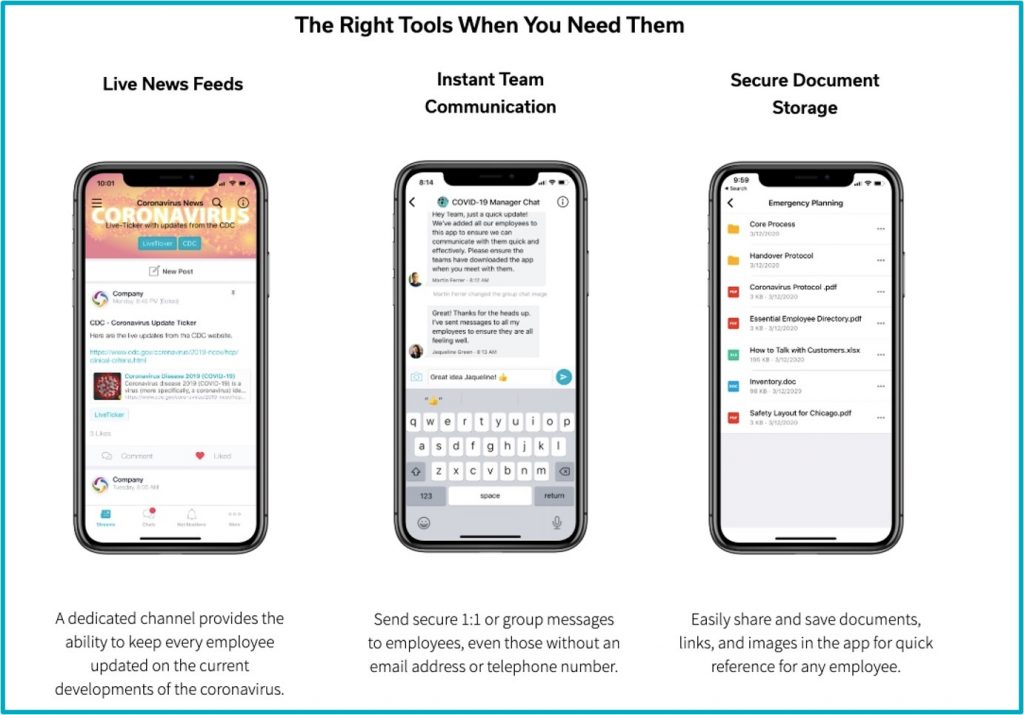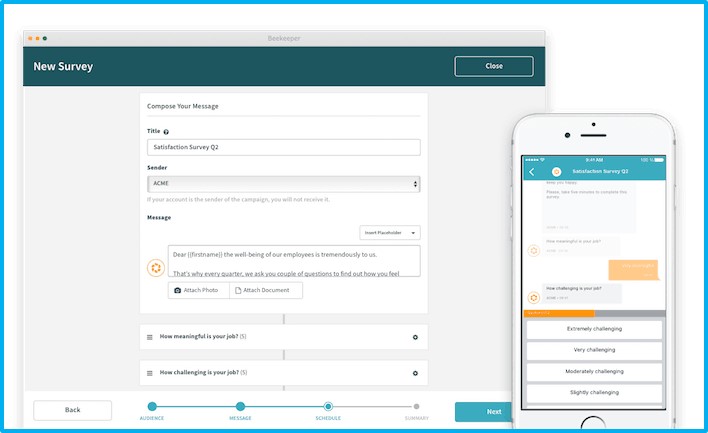8 min read
Companies are quite adept at managing how they communicate their messages outside the company and towards their target customers.
They have entire departments and teams of experts that strategize an external communications strategy and implement this through a well thought out communication plan.
But what about internal communications?
This is the act of conceptualizing and implementing a communications strategy targeted towards your own employees.
This often does not receive the same attention and focus that external communications receive.
But why is this the case?
In any introductory marketing class, you will learn about the 4 Ps of marketing – Product, Place, Promotion and Price. You develop a Product to sell, you decide the distribution channels for the product (the Place), you develop the marketing/promotional strategy (the Promotion) and a Price that maximizes your profit for the product. The Promotion aspect is the external communications previously mentioned.
While your employees will help deliver the 4 Ps, nothing is mentioned about how organizations will ensure that employees receive the needed information to do their jobs well.


This is why companies are beginning to recognize the importance of going to the next level in their approach to internal communications especially with their difficult to reach mobile, frontline, non-desk or (suddenly) dispersed workers.
Given the mobile nature of their work, this usually overlooked group requires different workforce solutions.
Namely, distributed workers don’t have access to email and instead depend on printed materials and other offline communication channels to get the information they need.
They need Work-Tech that connects tools, services, and information to people to get their work done – and that people want to use.
Here are 9 ways you can improve internal communications with your mobile workers:
- Communicate real-time with workers on the move
- Deliver updates on operational procedures and guidelines to employees quickly
- Communicate time-sensitive crises communications to your remote teams
- Get regular feedback from your teams
- Communicate success stories and best practices to create a positive work vibe
- Use data analytics to understand communication patterns better in the company
- Automate routine information dissemination
- Help employees recognize each other for good work
- Bridge communication gaps caused by language barriers
1. Communicate real-time with workers on the move
The number of mobile workers is increasing. In some industries, more than 80% of the workforce are non-desk bound workers whose day to day work requires them to be on the move. Industries like hospitality, logistics, retail and manufacturing are typical of this.


Many of these workers don’t even have a corporate email account nor access to a company intranet.
As a result, their access to important company information is sporadic at best. The good news is that there are options out there and no one needs to be left in the dark anymore.
Outside of work we already live in a seamless communications environment enabled by our smartphones.
Why not replicate that and operate in your own corporate world where communications flow freely virtually everywhere across every shift, location, and language?
In traditional organizations information flowed “up” and the decisions came “down,” but to compete now, you have to replace “knowledge is power” to “sharing is power.”
2. Deliver updates on operational procedures and guidelines to employees quickly
In today’s dynamic work environment, expectations of frontline workers are high. Despite having to handle multiple tasks at the same time, they are also expected to deliver excellent customer service (and with a smile on their faces).
To make things even more complicated, companies update their operating procedures and guidelines a lot more regularly in order to continually improve their operations and keep up with competition and customer needs.
This makes it imperative that all of these updates get out there promptly.
Better Operations Communications increase Workplace Safety


3. Communicate time-sensitive crises communications to your remote teams
Internal crisis communication is the elephant in the room that is often not talked about. What happens when an unexpected event such as a fire or flooding strikes one of your locations?
While teams on the site of the event will be busy handling the situation and trying to get back to a normal situation, and the company’s external communications team is handling messages to the public, it’s important to also keep your internal teams abreast of the latest developments.
If organizations do not keep their internal teams informed about developments in a timely manner, they risk rumours and misinformation spreading across the organization thereby creating unnecessary stress and concern amongst employees.
A surprising number of companies still rely on crisis communication methods by cascading information through the organization using phone calls, but those are an ineffective way to deploy workforce communications.
There are tools available that allow an instantaneous mass broadcasting of information throughout the organization which ensures that every employee gets the same information at the same time.
10 Ways Mobile Communication Can Save Your Crisis Communication


4. Get regular feedback from your teams
It’s becoming more common practice in companies to do employee surveys to gauge the pulse of the organization. This is a good thing of course. The problem arises when these employee surveys are done only once or twice a year.
That corporate-wide annual survey is too infrequent and often cumbersome. When conducted by an external party – presumably for the purpose of confidentiality or anonymity – it’s often slow. By the time information is shared so many things and leaders have changed that the feedback is irrelevant.
According to Mercer’s Global Talent Trends, 2020 more companies are listening to employees more frequently to improve business outcomes and to nurture a more continuous two-way conversation with their people.
In fact, the best way to boost employee engagement is to source opinions from employees themselves. Asking for their feedback shows that your company values employees and wants to hear from them.
10 Best Survey Questions to ask your Employees


5. Communicate success stories and best practices to create a positive work vibe
In days gone by, employees had to wait every quarter to get information and stories about people and events in a company. This was done through the quarterly employee newsletter that would be distributed in electronic form via email or through hard copies.
With the pace of business today, this seems a bit outdated. Why not leverage technology to get short success stories out to all employees on a regular, even daily basis so that the stories are current?
By going mobile with Internal Communications organizations will start mirroring how employees are now used to getting bite-sized information through various digital social media channels.
You can use more image and video-based communications as opposed to long-form written communications. Just as people are watching more digital content in their personal lives, Internal Communications should tailor messages to fit these consumption habits to share the corporate story frequently.
With this approach, companies will get current news stories out to their employees quicker and also reap the benefits of lowering the paper printing and manpower costs associated with the quarterly newsletters or announcements on bulletin boards.
While those social aspects of any workplace are important, employees are looking for meaningful engagement around their work that helps to inform, motivate, and inspire their day-to-day contributions and connection to the organization’s bigger mission and goals.
For instance, featuring employees in short blog posts about how they have been living your “corporate values in action” recognizes them and shows the rest of the geographically dispersed team behaviours that exemplify the company’s core values.


6. Use data analytics to understand communication patterns better in the company
Some companies revert to what seems to be the easiest option available and use readily available social messaging apps to communicate with their mobile workers.
Unfortunately, these consumer tools have limitations and are a far cry away from more sophisticated corporate internal communications platforms currently available. These channels have data analytics capabilities that are critical for tracking and measuring how information is being distributed and assimilated throughout the company.
With the current internal communications technology available out there, there is a possibility to leverage smartphones (which most employees already have in their hands) and get communicating with those non-desk employees who are not always kept in the loop.
Companies will be striving towards managing their messages to and from employees a lot better. For that a real-time feedback loop on how communications are being received, perceived, and engaged with is essential.
Gathering people-data in real-time for better management decisions is a trend Deloitte has identified back in 2016 already (pages 87 ff).


For example, analytics can help to identify the “informal opinion leaders” more easily. Once the internal communications leadership knows who those “cheerleaders” are, it can involve them to help communicate change within the organization.
Having those “cheerleaders” lead lateral communication at various levels on your platform introduces new and current employees to the objectives of a change project. A strong way to maintain engagement during periods of change like M&A and reorganizations.
7. Automate routine information dissemination
Automating many of the most common workplace operations, such as re-occurring on-boarding (SOPs, guidelines, and policies) or shift notifications, is another method of incorporating internal communications automation trends. When you set up templates and mailing lists one time and delegate the distribution to an event-triggered process, productivity is vastly enhanced.
In the case of new team members joining, the employee experience could seamlessly continue right after the new member has signed the employment contract to ensure candidates understand how they will be set up for success.
Leading-edge internal communications platforms can automate onboarding experiences allowing organizations to start building rapport before the employee even starts work.
With bite-sized information sent to their mobile phones, you can drip feed multi-media content that is in sync with how we operate as humans. Nobody can possibly retain all the information that’s parcelled up for them on day one.




8. Help employees recognize each other for good work
Offering kudos is wildly underrated. When it comes to employee recognition, a little can go a long way.
Employees want to know the work they do is noticed. That’s why recognizing employees who go above and beyond is a key part of successful company cultures.
Non-desk workers rarely get recognized for the work they do, and with traditional internal communication, they often wouldn’t even know if they were recognized.
Moreover distributed employees don’t get as much built-in time with managers or even peers from other locations as they don’t see them on a regular basis. That recognition doesn’t have to be monetary, but it should be timely and public. And it should not only come from bosses but from peers too:
HR in Asia – Peer-to-Peer Recognition & How It Changes the Workforce
Social recognition technology is a platform that enables companies to recognize and validate behaviours and empower employees to share their work. It provides unlimited access to non-monetary recognition.
Social recognition with the help of technology digitalizes the way employees are recognized and encourages peer-to-peer recognition across shifts, locations and even languages.


These workplace technologies make the recognition highly visible within the organization to strengthen the company culture and celebrate shared victories.
Relying solely on supervisors to offer recognition to subordinates is outdated.
In today’s increasingly global business environments, there is a growing need to enable and encourage location independent peer-to-peer recognition tools.
A common platform decentralizes how employees can share each other’s achievements and updates, and be notified instantly when they do.
This allows employees to get to know the company and each other better. The resulting camaraderie plays the true motivating role in encouraging employees to outperform expectations.
For example, when JetBlue implemented a peer-to-peer recognition system that was built on company values, its employee satisfaction surged by 88 percent.
And it increases the engagement levels of employees by almost three times than the engagement level of those who do not receive recognition (IBM WorkTrends survey).
9. Bridge communication gaps caused by language barriers
Miscommunication is expensive.
Due to high levels of linguistic and cultural diversity within the non-desk workforce, it is beneficial to create inclusiveness by lowering language barriers.
A digital communication platform can provide instant inline translation.
The benefits of instant inline translation are relatively self-evident.
When your entire workforce is given the opportunity to read and understand the information in their native language, you are inherently setting your organization up for increased safety, stronger peer-to-peer trust, and a lessened learning curve for team members in the on-boarding process.
Digitally enabled culturally inclusive communication poises your business for unprecedented global expansion.


In summary, digital workplace trends indicate incorporating more automation simplifies internal communications. Using internal communications tools, like digital workplace technology and smartphone technology, can go a long way in improving communications and productivity for your entire workforce.
In fact, using social technologies to improve workforce communications could increase productivity by up to 25% (McKinsey Study).
One of the biggest trends in workforce communications is the continuous rise in mobile. Corporate mobile apps will become even more common as they facilitate employee communication across physical barriers, and strengthen their engagement and loyalty.
For internal communicators, the challenge and opportunity lie in leveraging the potential of mobile to encourage collaboration and improve performance before everybody else does.
With a proven and tested platform for the entire team that is easily achievable.
Because ultimately, communication is more than a craft. It’s a way to improve your organization’s results.
Less talk, more action?
Start here:


Can’t wait to experience how the award-winning Beekeeper Platform could make a difference in your internal communication and lead to better business results?
Book a demo here:

